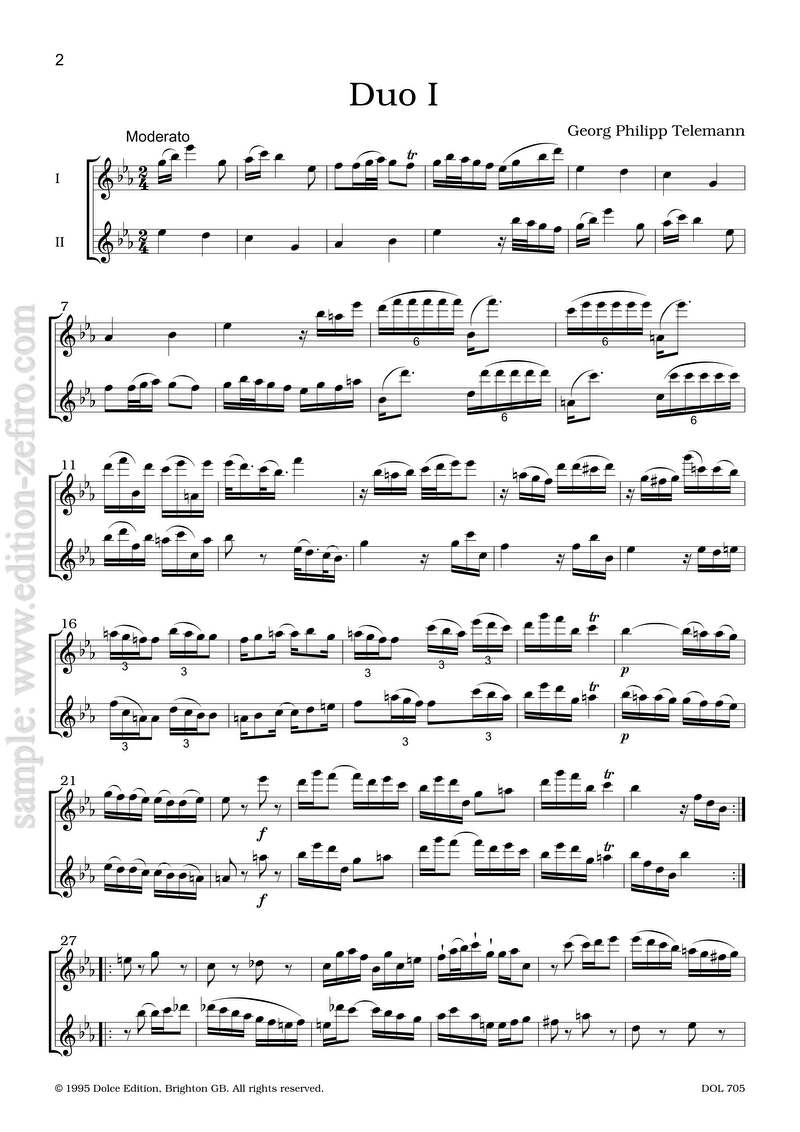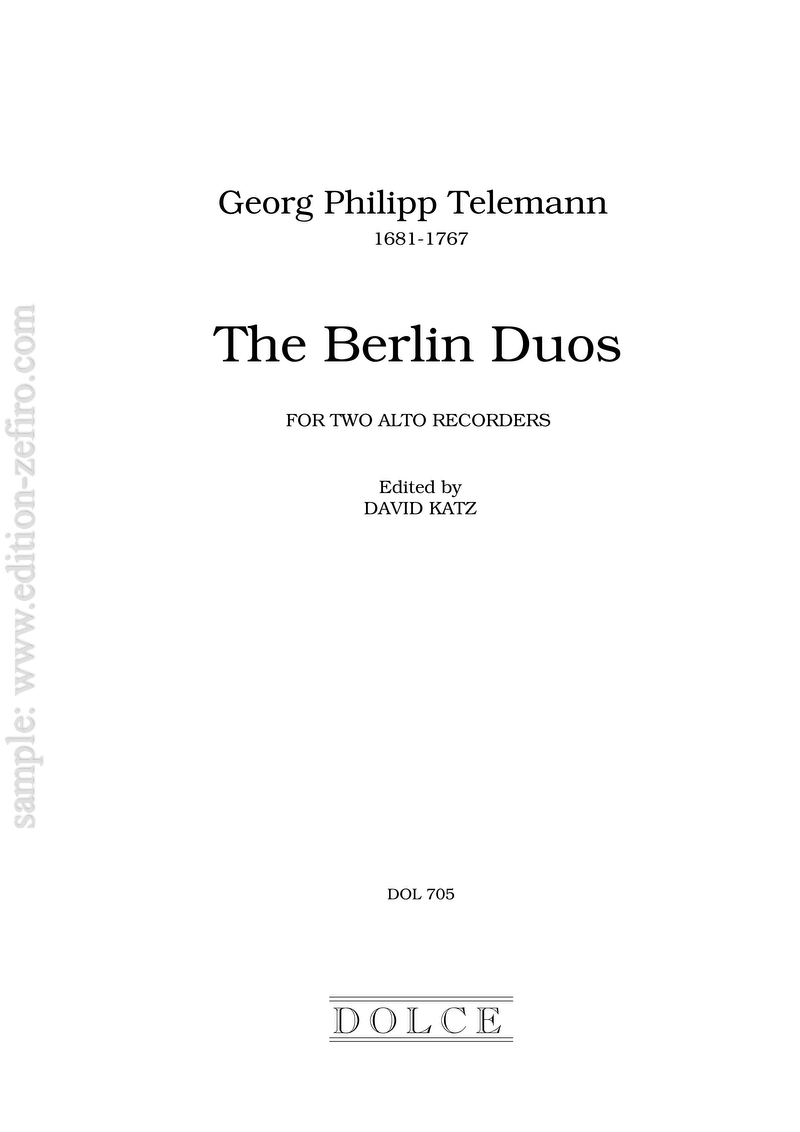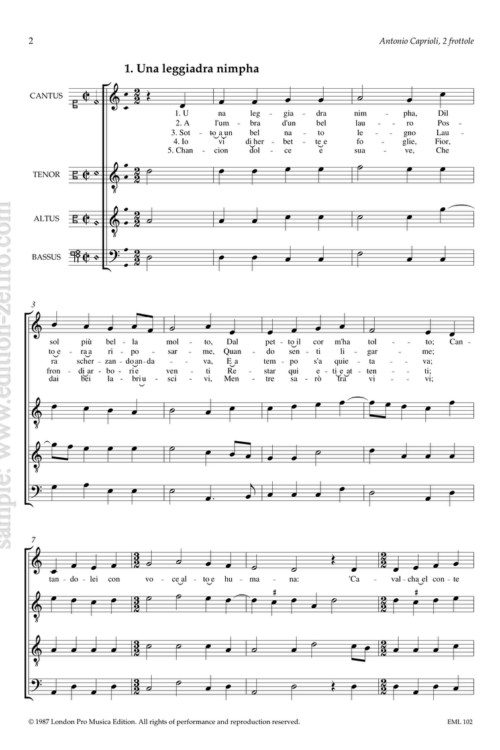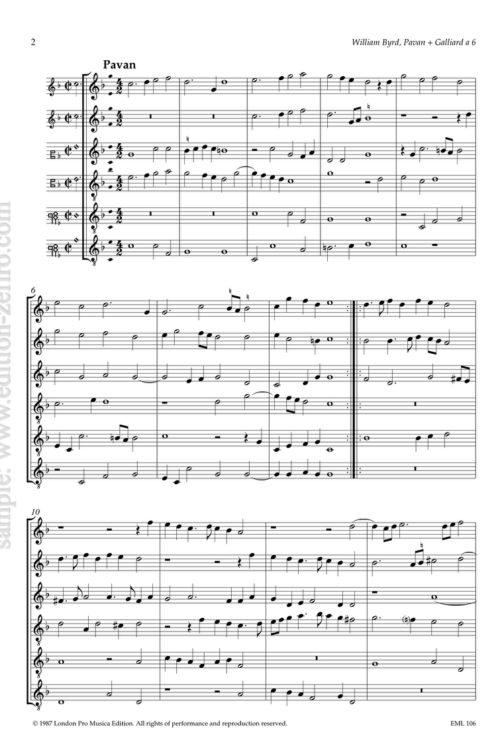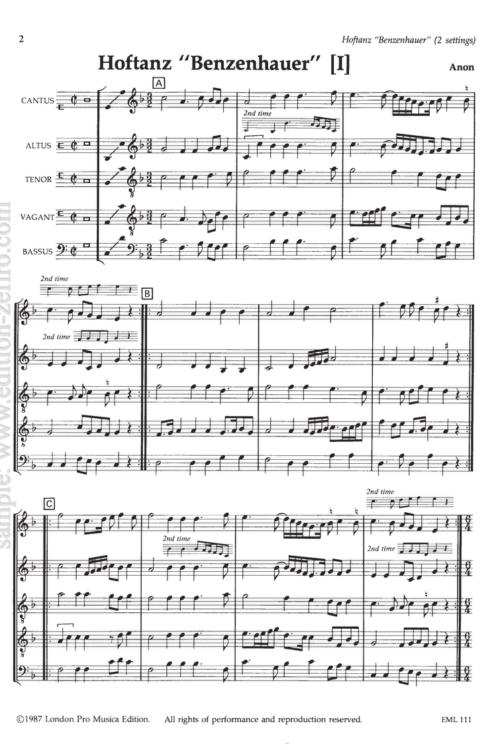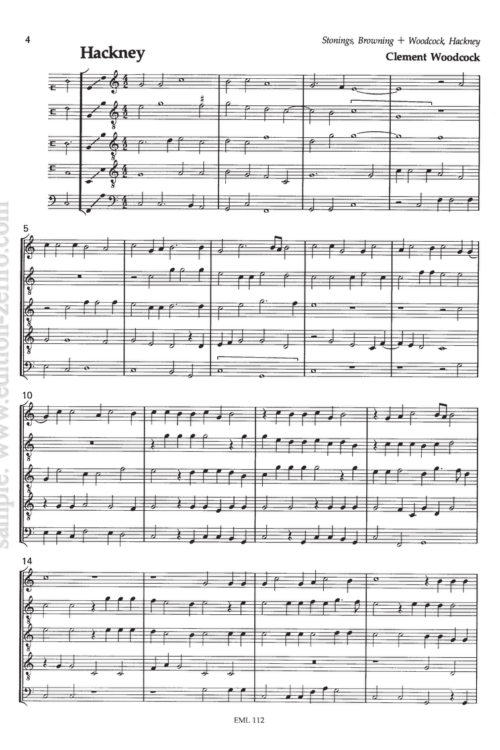These duos are a little more demanding than the popular Opus 2 duos, but really worth the effort.
This third set of duos by Telemann for two flutes (excluding the canonic duets) has come down only in single manuscript source, in the Staatsbliothek in Berlin (Preussischer Kultur- besitz, MS mus. 21787); the manuscript is, rather unhelpfully, entitled “Sei duetti per due Flauti”. The pieces differ from the other duos in having four rather than three movements. From the style of the music one might suppose that they come from late in Telemann’s life, at least as late as the 1752 duos already published in this series (DOL 701 ↣). They may indeed be the pieces that Quantz praises so highly in his book of duos of 1759 (available in DOL 702 ↣).
It has to be admitted that these remarkable pieces, clearly conceived for the transverse flute, do not fit on the recorder without a struggle. As they are, with one exception, written in flat keys, rather than the tonalities more normally associated with the baroque flute, the conventional transpostion up a minor third for the recorder does not generally work. In this arrangement, only no. 6 has been moved up by this interval: nos 1,2 and 5 have been transposed up a fourth, no. 3 by a fifth, and no. 4 by a major third. Some high notes such as top F sharp, G sharp and A could not be avoided, but the use of the knee or a bell key seems a small price to pay for being able to play
such inventive music (in most cases, however, alternatives are supplied in small print). A slight liberty has been taken with two of the slow movements (nos. 3 and 4): these appear relatively a tone lower than the rest of the movements to avoid inappropriately screaming high notes: however that for no. 4 appears at the “correct” pitch in the separate turnover sheet.
In this transcription a few editorial markings are printed in brackets; editorial slurs are printed in dots. Apart from the occasional alternative notes given, we have avoided the temptation to really arrange these pieces for the recorder. As a result, players may find a few things that do not work well on their particular recorders: a case in point is the Larghetto of Duono.2, bar8, where the leap to the high F may sound strained, compared to the corresponding note on the transverse flute: the last notes can perhaps be omitted, or replaced by a drop to the lower octave. Again, in the Larghetto of no. 4 the fermata chord at bar 21 may be hard to balance as it stands: playing the F sharp an octave higher might fix the problem. These days there is no need for musicians to be too literal-minded at such moments: 18th-century musicians would certainly have had no inhibitions about such small adjustments.
(David Katz)


